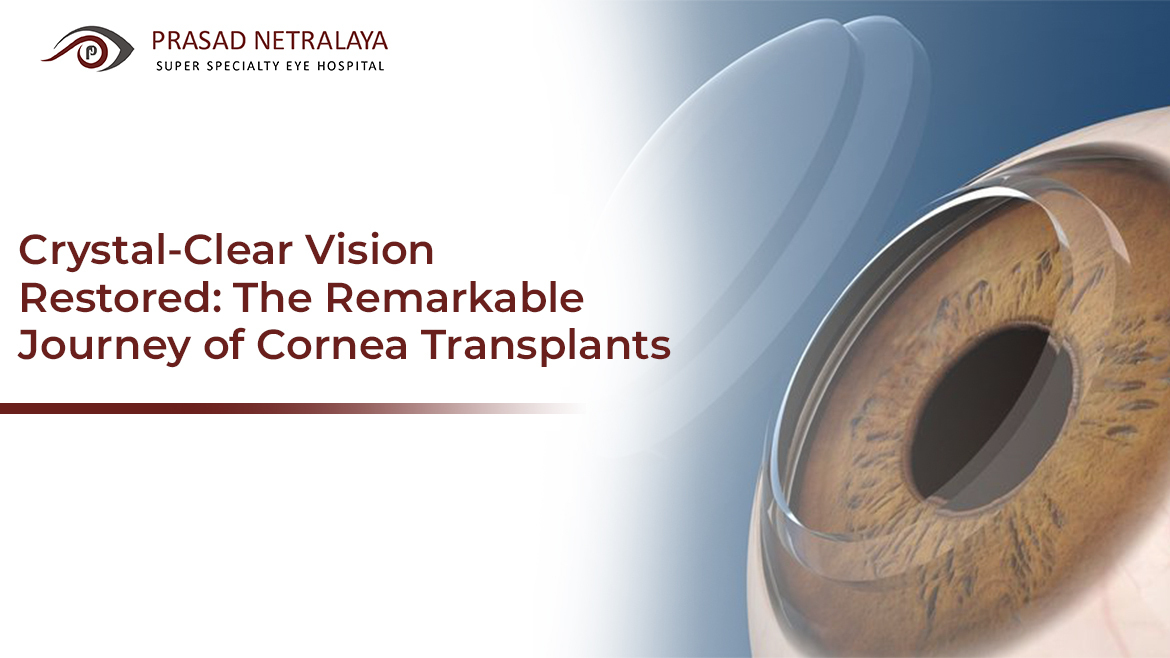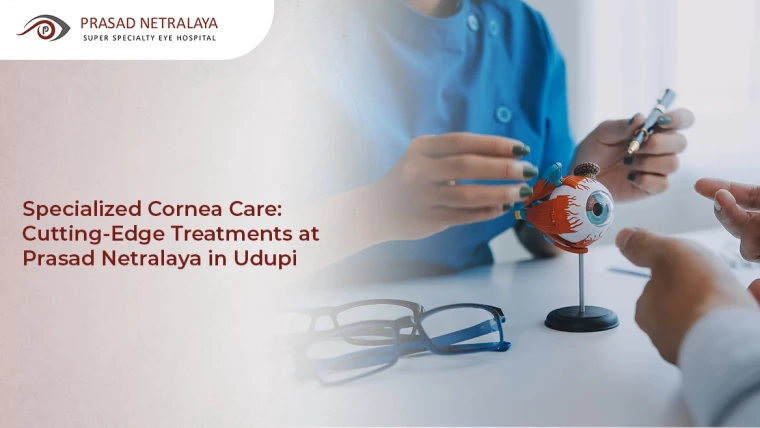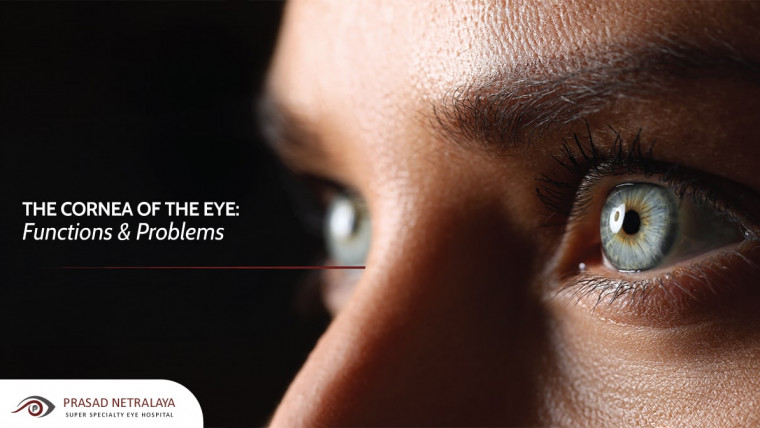The human eye is a convoluted element in which the cornea is critical to seeing things clearly. However, various diseases can compromise the cornea’s integrity, reducing eyesight. In such circumstances, corneal transplantation emerges as a vital approach, enabling individuals to regain crystal-clear eyesight.
The significance of corneal transplants is the capacity to improve or restore vision, allowing individuals to live better lives, become more independent, and explore the world with newly acquired visual acuity.
This blog digs into an in-depth understanding of cornea transplants, their types, the costs involved, and choosing the ideal treatment in a renowned cornea eye hospital.
Table of Contents
What Are Corneal Transplants?
Cornea transplants, known as keratoplasty, are surgical treatments to restore vision damaged by corneal diseases. The cornea is the clear front covering of the eye, disrupted by diseases, injuries, or infections, resulting in weak eyesight.
Corneal transplants replace a damaged cornea with a healthy donor cornea, resulting in better vision. The procedure includes thorough pre-operative tests to assure compatibility and variety of surgical procedures; post-operative care is essential for successful treatment.
What Are the Types of Corneal Transplants?
Understanding the different types of corneal transplants allows patients and healthcare practitioners to adjust treatment according to individual needs and enhance visual outcomes.
1. Penetrating Keratoplasty (PKP)
PKP procedure replaces the entire damaged cornea with a donor cornea. This classic cornea transplant works well for severe corneal damage caused by traumas, infections, or degenerative illnesses.
2. Anterior Lamellar Keratoplasty (ALK)
ALK procedure replaces only the front or anterior layers of the cornea while leaving the inner layers intact. This transplant is appropriate for problems affecting the cornea’s surface, such as keratoconus or superficial scarring.
3. Endothelial Keratoplasty (EK)
EK targets the endothelium, the deepest layer of the cornea. Compared to PKP, only descemet’s membrane and endothelium are replaced with donor tissue, making EK a favoured alternative for treating endothelial abnormalities and shortening recovery durations.
4. Descemet’s Stripping Endothelial Keratoplasty (DSEK)
DSEK includes removing and replacing the descemet’s membrane and endothelium selectively. This design treats endothelial dysfunction, enhancing visual outcomes and hastening recovery.
5. Descemet’s Membrane Endothelial Keratoplasty (DMEK)
DMEK is a DSEK modification in which cornea transplantation performs only the descemet’s membrane and endothelium. This technique promises to improve visual outcomes while lowering the likelihood of rejection.
6. Deep Anterior Lamellar Keratoplasty (DALK)
DALK is a procedure that includes transplanting all layers of the cornea except the endothelium. This procedure is applied when preserving the patient’s critical endothelium, such as keratoconus.
7. Automated Lamellar Therapeutic Keratoplasty (ALTK )
In contrast to full-thickness cornea transplants, lamellar keratoplasty typically replaces corneal tissue layer by layer. This form of surgery treats specific corneal illnesses or abnormalities while causing as minimal damage to the typical regions of the cornea as possible.
8. Keratoprosthesis (Artificial Cornea)
Keratoprosthesis, also known as an artificial cornea, is a leading surgical option meant to treat severe corneal illnesses and situations where standard corneal transplantation can prove unfeasible or ineffective. This method restores vision by substituting an injured or diseased cornea with an artificial implant.
What Are the Key Considerations for Cornea Transplants?
Here are critical aspects of cornea transplants that enable you to enhance the possibility of a successful outcome for vision restoration.
1. Medical Evaluation
Thorough pre-operative evaluations help in evaluating eligibility for cornea transplants. These consider the overall health of the eye, the level of corneal injury, and any underlying disorders.
2. Cornea Transplants Type
Different cornea transplants, such as PKP and EK, address various diseases. The type of transplant chosen varies by the nature and severity of the corneal condition and the patient’s circumstances.
3. Expertise of the Surgeon
The experience and competence of the surgeon performing the cornea transplant have a substantial impact on its success. Choosing a surgeon specialising in corneal surgeries increases the possibility of a successful outcome.
4. Reputative Cornea Eye Hospital
Choosing a renowned cornea eye hospital ensures a greater patient experience through facilities with a track record of successful cornea transplants and a focus on eye care excellence.
5. Corneal Transplants Cost Considerations
You must clarify corneal transplant costs in advance and verify insurance coverage. Understanding all aspects of the treatment, including pre-operative examinations, surgery, postoperative care, and medications, is vital.
6. Recovery and Post-Operative Care
You should also learn about the recuperation process, any restrictions, and follow-up consultations. Compliance with post-operative care recommendations is essential to the success of the procedure.
7. Donor Tissue Availability
The availability and quality of donor corneal tissue impact the transplant’s success. You must discuss donor tissue sources with the healthcare team and maintain accessibility.
8. Potential Complications and Risks
You must also recognize and discuss the potential risks and problems of cornea transplantation, such as infection, swelling, or delay in healing. Understanding these aspects enables educated decision-making and realistic expectations of operation outcomes.
9. Patient’s Overall Health
The patient’s overall health has an impact on the transplant’s success. Diabetes and autoimmune illnesses can affect your healing and recovery. It is critical to discuss general health with the medical team.
10. Regular Follow-Up
Routine appointments are vital to assess your transplant’s recovery and help in treating any issues immediately. A clear post-transplant surveillance plan assures continued eye health.
11. Long-Term Prospects
You have to consider the transplant’s long-term consequences, including the possibility of additional interventions or changes. Understanding the predicted long-term outcomes aids in the establishment of appropriate expectations.
Embrace Your Cornea Transplants Journey With Netralaya Hospital
The remarkable journey of cornea transplants demonstrates the power of medical strategies to improve lives by restoring vision and improving general well-being. Choosing a trustworthy cornea eye hospital, scheduling regular check-ups, and being cautious about possible complications are all essential components in ensuring a smooth and stress-free cornea transplantation experience. To plan financially and avoid treatment or medication delays, you must evaluate the corneal transplant cost.
Seize the opportunity for a brighter future. Contact Prasad Netralaya Eye Hospital to embrace a life free from visual constraints and let vision clarity define your journey for better eye health.
Dr. Vikram Jain, M.S. had his medical training (MBBS) from Kasturba Medical College, Mangalore, India. He did his master’s in Ophthalmic surgery from Kasturba Medical College, Manipal. He currently manages the Glaucoma department of Prasad Netralaya hospital.



